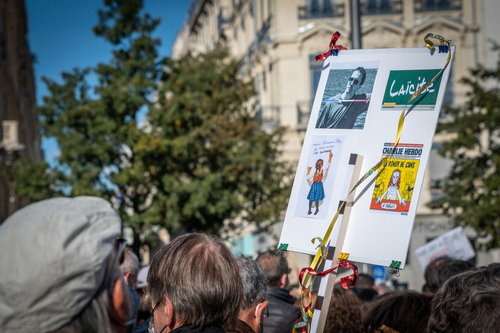Belgium (Brussels Morning) Islamic fundamentalism has been present in Iran and other Islamic countries for centuries. In Iran, this trend has primarily been associated with autocratic rulers. However, the prevalence of medieval religious ideas had never really become widespread, at least in Iran, until a historical event profoundly marked the contemporary history of Iran and the world. This event was the uprising of the Iranian people against the Shah.
The Shah’s repression of progressive movements created a political vacuum, which this fundamentalist current exploited, seizing power through the network of mosques and the influence of religion on the population. Thus, for the first time in the contemporary history of Iran and the world, a government possessing both political power and religious authority emerged, giving birth to a medieval tyranny under the guise of religion.
Ultimate Goal of Fundamentalists
The ultimate and declared goal of the fundamentalists is to establish an “Islamic caliphate” and impose Sharia law by force. This is the common thread and focal point of all variants of Islamist fundamentalism, Shiite or Sunni, making their differences secondary to this common objective. Khomeini named it “velayat-e motlaq-e faqih” (the absolute regime of the supreme guide), emphasizing that the preservation of “Islamic” power takes precedence over everything.
The supreme guide system founded by Ayatollah Khomeini is incompatible with the modern world. This system is incapable of solving the political, social, economic, or cultural problems of the 21st century. Consequently, it relies solely on brute violence, under the cover of Islam, to prolong its existence. The mullahs seek to push the world back, making it compatible with themselves, through sheer force, violence, and killings, which explains why they commit countless atrocities.
This phenomenon is clearly characterized by its aggressiveness and propensity for violence. It recognizes no borders, and its survival depends on expansion. Thus, from day one, the regime has resorted to massacres, torture, and daily executions, adding stoning, enucleations, and amputations, which continue to this day. At the same time, it began to interfere in the affairs of other countries.
In Iran and Afghanistan, the mullahs have sidelined women from political and social life. Through discrimination, brutal repression, and the imposition of the veil, they have attempted to intimidate and terrorize the population.
Ethnic minorities have suffered severe repression and discrimination, and religious minorities have been brutally oppressed and deprived of their fundamental rights. This conduct was quickly enshrined in the Constitution and institutionalized in the penal and civil codes and continues today.
Shiite and Sunni Fundamentalism
This is precisely the example followed by Shiite and Sunni fundamentalists in other countries. This governance system is in total contradiction with the very foundations of Islam and civilized norms. It is called “Islamic caliphate” by the Sunni fundamentalists who share the same characteristics and modus operandi. From a legal and religious standpoint, this system has no capacity for internal change or reform. The regime eliminates anyone who questions the absolute power of the clergy.
ISIS and Sunni fundamentalist groups maintain no clear and perceptible link with the mullahs of Tehran; they are even hostile in several areas; therefore, an artificial dichotomy has been assumed between Sunni and Shiite fundamentalists.
However, Tehran’s religious leaders instrumentalize Sunni and Shiite fundamentalist groups at every opportunity for their own ends. As seen in the recent war in the Middle East, Hamas, although Sunni, has been instrumentalized by the Iranian regime.
Theoretically, fundamentalism represents a perverted vision of Islam. What is presented under the banner of these two aberrations of the Muslim faith is essentially the same. Both promote misogyny and religious discrimination. Contrary to Quranic verses, both impose religion and beliefs by force. Both rely on medieval Sharia laws to impose the most violent and inhumane forms of punishment. Both aim for a reactionary caliphate, translating into the cruel power of an individual tyrant. One calls it Velayat-e-Motlaq e faqih (the absolute regime of the supreme guide) while the other names it a Caliphate. Thirty years ago, Khomeini clearly declared in a public speech that “we want a caliph who amputates, whips, and stones to death.”
Shiite fundamentalists, however, are more dangerous than Sunnis because they are backed by a regional power, the religious dictatorship in power in Iran. Observe the situation in Iraq and what happens there daily. The so-called Shiite militias, related to Iran’s mullahs, act with more brutality than their Sunni counterparts, like ISIS. In the long term, they pose a much greater threat than their Sunni counterparts to the independent existence of Iraq and to regional peace, security, and stability. Through these militias, the mullahs have made four Arab countries, namely Iraq, Syria, Yemen, and Palestine, theaters of their terrorism and destruction.
Exportation of Fundamentalism
In his will, Khomeini called for the overthrow of all existing governments in the Muslim world, followed by the deposition of their leaders and the establishment of an “Islamic State with free and independent republics.” The current supreme leader of the regime, Khamenei, has proclaimed himself a source of emulation for Shiites and Supreme Leader of all Muslims. In other words, in terms of governance, Khamenei considers himself the master of all Muslims.
The Qods terrorist force of the Islamic Revolutionary Guard Corps, formed a quarter of a century ago, is the instrument for exporting fundamentalism to Shiite but also Sunni communities.
The former president of the mullahs’ regime, later head of the Expediency Council, Ali-Akbar Hashemi-Rafsanjani, boasted in the 1990s that “if we acquire nuclear weapons, who could prevent the exportation of the revolution to Islamic countries?” This proved that the Supreme Leader Ali Khamenei’s fatwa that nuclear weapons are haram (forbidden) is a sham.
Indeed, the existence of an extremely young and restless society that overthrew the previous dictatorship has made this medieval regime perpetually unstable, which has pushed it to export its retrograde ideology to contain its internal crises.
In the Iranian regime’s Constitution, the export of crises, terrorism, and fundamentalism has been codified in articles 3, 11, and 154 under the guise of “unwavering support for the Mostazafan” (oppressed of the world) and “the unity of the Muslim world.” They are among the pillars of the regime’s foreign policy.
Interference in Iraq
For Khomeini, exporting the ‘Islamic revolution’ to Iraq and establishing a brotherly regime there was the top agenda item, paving the way for a conflict that later erupted when Iraq attacked Iran in 1980. In an attempt to dominate Iraq from 1979 and then continuing the Iran-Iraq war with the slogan ‘liberate Quds [Jerusalem] via Karbala,’ the regime sought to export its medieval ideology into the Muslim world. Contrary to the international community and the United Nations Security Council, which called for an end to the war and a ceasefire, Khomeini realized that Iraq could serve as a springboard for expansion into the Arab and Muslim world.
Khomeini, who accepted defeat in the Iran-Iraq war in 1988 to prevent any social protest movement, massacred over 30,000 political prisoners within a few months the same year. The majority of the victims belonged to the People’s Mujahedin Organization of Iran (PMOI), paradoxically a Shiite Muslim group. Today, the same individuals responsible for the 1988 massacre occupy key positions in government organizations, including the current president, Ebrahim Raisi.
Parallel to the war in Iraq, and especially afterwards, the Iranian regime allocated a huge budget to establish so-called cultural and educational centers in various countries to disseminate its Islamist fundamentalist ideology and recruit supporters. In many countries, including Lebanon, the Palestinian territories, Syria, Iraq, and Yemen, it has trained, funded, and armed Shiite and Sunni terrorists.
From the outset, the mullahs’ regime attempted to spread fundamentalism by taking 52 Americans hostage for 444 days in 1979, blowing up the American Marines’ barracks in Beirut in 1983, creating Hezbollah in Lebanon and the Supreme Council for the Islamic Revolution in Iraq (SCIRI), as well as several groups in other Muslim countries, and taking Western nationals hostage in Lebanon.
This is not a policy limited to the past. In recent years, the policy of interference in other countries’ affairs has intensified, taking on significantly broader and deeper dimensions. The current devastating war in the Middle East is an example. Thus, this phenomenon, taking both a new form and broader dimensions, has emerged by leveraging Iran’s cultural and historical position, a country also endowed with one of the world’s largest reserves of oil and gas.
New Global Threat
It is only due to the existence of the Supreme Leader’s regime in Iran that Islamist fundamentalism has transformed into a new global threat. Maryam Rajavi, the leader of the Iranian opposition, believes that the danger of fundamentalism and interference in regional countries is a hundred times more dangerous than acquiring nuclear bomb. The carnage left by the war in Gaza is one of the disastrous consequences of fundamentalism in the region.
Without the instrument of state power in a country like Iran, reactionary forces could not have gathered such potential nor the prospect of emerging as a destructive political force.
This transformation would have been impossible without Iran’s central role, a vast and strategically located country known for its unique influence in the Muslim world. Conversely, the collapse of this epicenter will lead to the isolation and defeat of this threat worldwide, rendering it inoperative.
This sinister creature, in perpetual crisis and total hostility towards human civilization, has generated only war and carnage for four decades. By targeting the heart of the monster in Tehran, world peace could be established.
Opinions expressed in the op-ed section are solely those of the individual author and do not represent the official stance of our newspaper. We believe in providing a platform for a wide range of voices and perspectives, even those that may challenge or differ from our own. As always, we remain committed to providing our readers with high-quality, fair, and balanced journalism. Thank you for your continued support.Sincerely, The Brussels Morning Team




